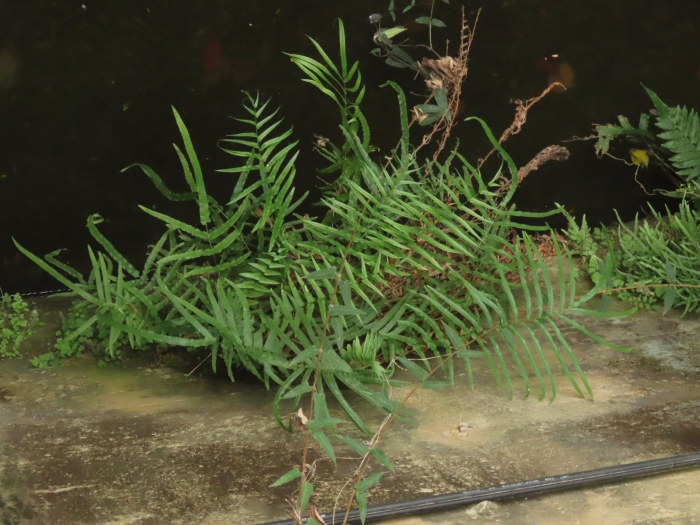Chinese Brake
(Pteris vittata)
Chinese Brake (Pteris vittata)
/
/

chiuluan
CC BY 4.0
Image By:
chiuluan
Recorded By:
Copyright:
CC BY 4.0
Copyright Notice:
Photo by: chiuluan | License Type: CC BY 4.0 | License URL: http://creativecommons.org/licenses/by/4.0/ | Rights Holder: chiuluan | Publisher: iNaturalist | Date Created: 2022-10-31T13:51:26-07:00 |
























Estimated Native Range
Summary
Pteris vittata, commonly known as the Chinese brake or ladder brake, is a perennial fern native to a variety of habitats including rocky limestone areas, forest margins, and open woodlands across Asia, southern Europe, tropical Africa, and Australia. It is also known to colonize disturbed sites and can often be found on concrete structures in urban environments. This fern typically grows to a height of 18-24 inches (45-60 cm) with a similar spread, featuring arching fronds that give it a delicate, feathery appearance. The fronds are compound with pinnae (leaflets) arranged in a ladder-like fashion, hence the common name "ladder brake." The plant is evergreen in mild climates, adding year-round interest to garden settings.
The Chinese brake is valued for its ability to tolerate urban pollution and its adaptability to a range of soil types, including those with high levels of heavy metals, making it useful for phytoremediation. It is often used in shaded or semi-shaded areas of gardens, as ground cover, or in containers. Pteris vittata prefers moist, well-drained soils and can thrive in part shade to full shade conditions. While it is relatively low-maintenance, it can spread via spores and become invasive in some regions. Gardeners should be cautious about planting it in areas where it is not native and check local regulations.CC BY-SA 4.0
The Chinese brake is valued for its ability to tolerate urban pollution and its adaptability to a range of soil types, including those with high levels of heavy metals, making it useful for phytoremediation. It is often used in shaded or semi-shaded areas of gardens, as ground cover, or in containers. Pteris vittata prefers moist, well-drained soils and can thrive in part shade to full shade conditions. While it is relatively low-maintenance, it can spread via spores and become invasive in some regions. Gardeners should be cautious about planting it in areas where it is not native and check local regulations.CC BY-SA 4.0
Plant Description
- Plant Type: Fern
- Height: 2-4 feet
- Width: 3-4 feet
- Growth Rate: Moderate
- Flower Color: N/A
- Flowering Season: Non-Flowering
- Leaf Retention: Evergreen
Growth Requirements
- Sun: Part Shade, Full Shade
- Water: Medium
- Drainage: Medium, Fast
Common Uses
Low Maintenance, Potted Plant
Natural Habitat
Native to rocky limestone areas, forest margins, and open woodlands across Asia, southern Europe, tropical Africa, and Australia
Other Names
Common Names: Chinese Brake Fern, Brake Fern, Chinese Brake, Ladder Brake
Scientific Names: , Pteris vittata, Aspidium humile, Polypodium trapezoides, Pteris acuminatissima, Pteris alpinii, Pteris amplectens, Pteris amplexicaulis, Pteris aspera, Pteris costata
GBIF Accepted Name: